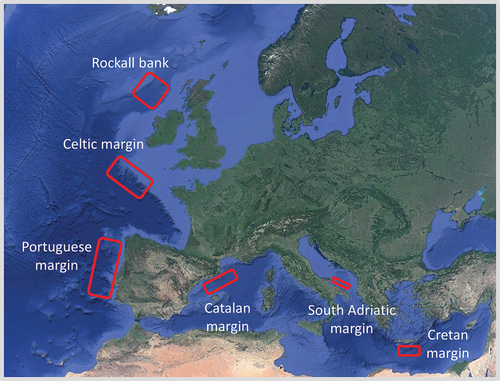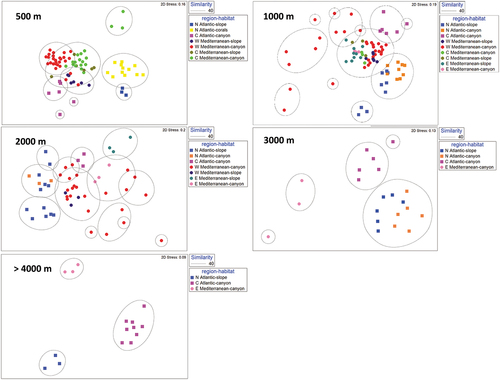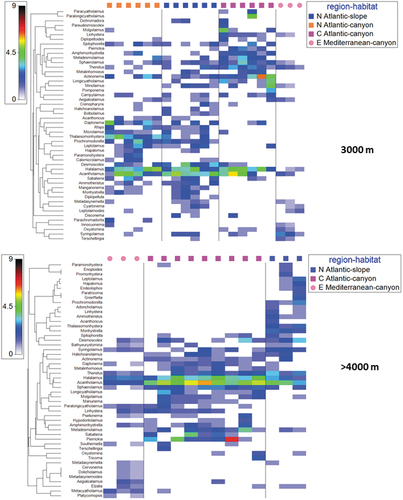Figures & data
Figure 1. Sampling areas along the European margins. Overall, 246 sites (depth range: 200–4700 m) were sampled along 12 open slopes, nine canyons (Whittard, Cascais, Nazarè, Cap de Creus/Sete, Lacaze-Duthiers, two in the South Adriatic and one in Cretan margin) and one deep-water coral bank.

Figure 2. List of all nematode families identified in (a) the Atlantic Ocean and (b) the Mediterranean Sea. The number of genera belonging to each family is also reported.

Table I. Output of the PERMANOVA analysis carried out to test for differences in nematode genus composition among regions and habitats (df = degrees of freedom; MS = mean square; Pseudo-F = F statistic; P(MC) = probability level); *** = P < .001; * = P < .05. ns: not significant. N Atl (North Atlantic including Rockall bank and Celtic margin), C Atl (central Atlantic: Portuguese margin), W Med (western Mediterranean: Catalan margin), C Med (central Mediterranean: South Adriatic margin) and E Med (eastern Mediterranean: Cretan margin)
Figure 3. Multidimensional scaling analysis carried out on the genus composition of nematodes collected in the six European margins and different habitats (slope, canyon and deep-water corals) at different depth intervals: 500, 1000, 2000, 3000 and >4000 m.

Figure 4. Nematode diversity in different habitats and within regions at different depths. The expected genus number [EG(100)] is reported.
![Figure 4. Nematode diversity in different habitats and within regions at different depths. The expected genus number [EG(100)] is reported.](/cms/asset/6aaed796-5b95-4d7e-a0e9-057faf140136/tizo_a_2040621_f0004_oc.jpg)
Table II. Turnover diversity among nematode assemblages’ composition in different habitats within the same region and between regions within slope and canyon. The turnover diversity was obtained from the SIMPER analysis


